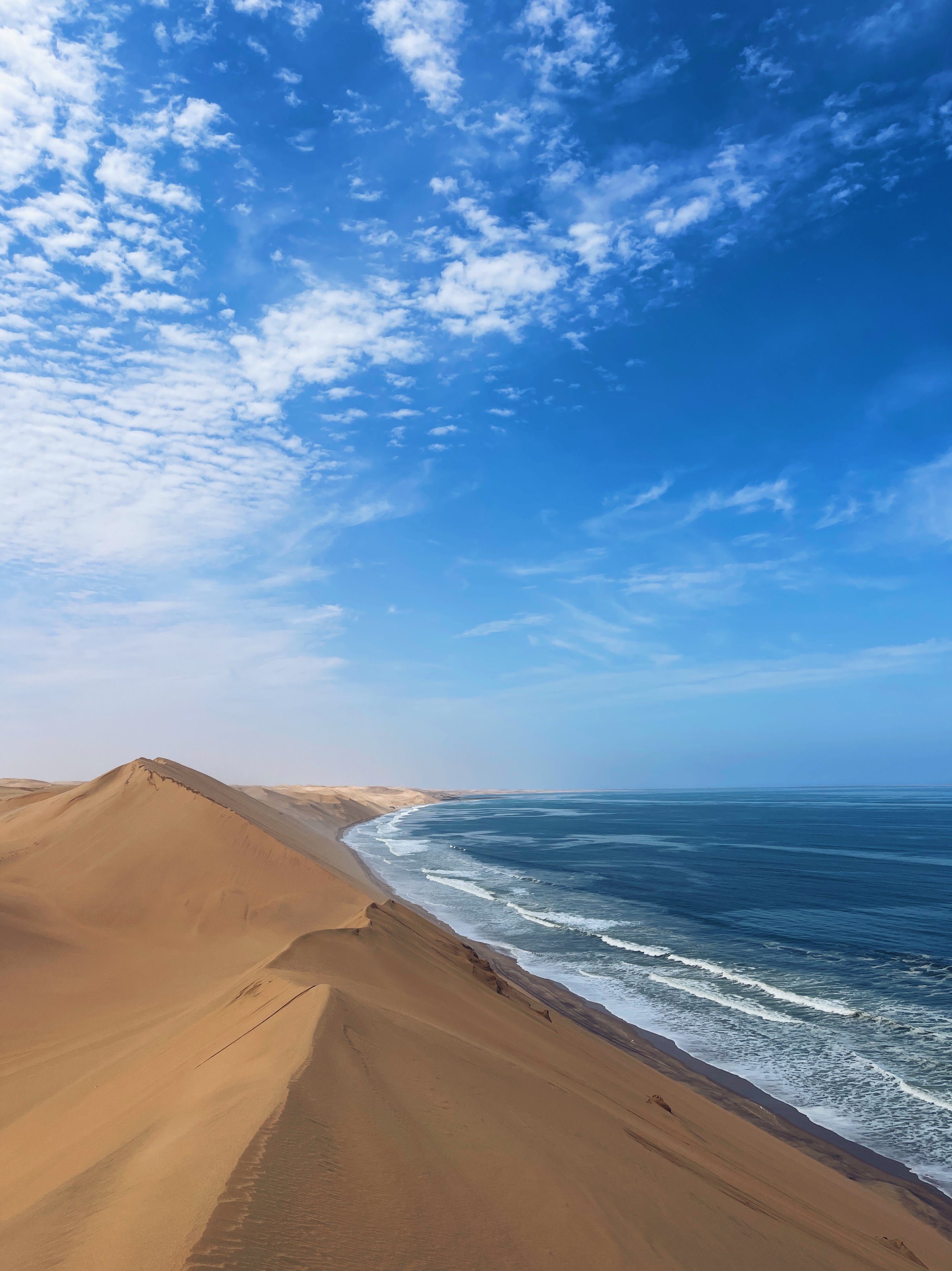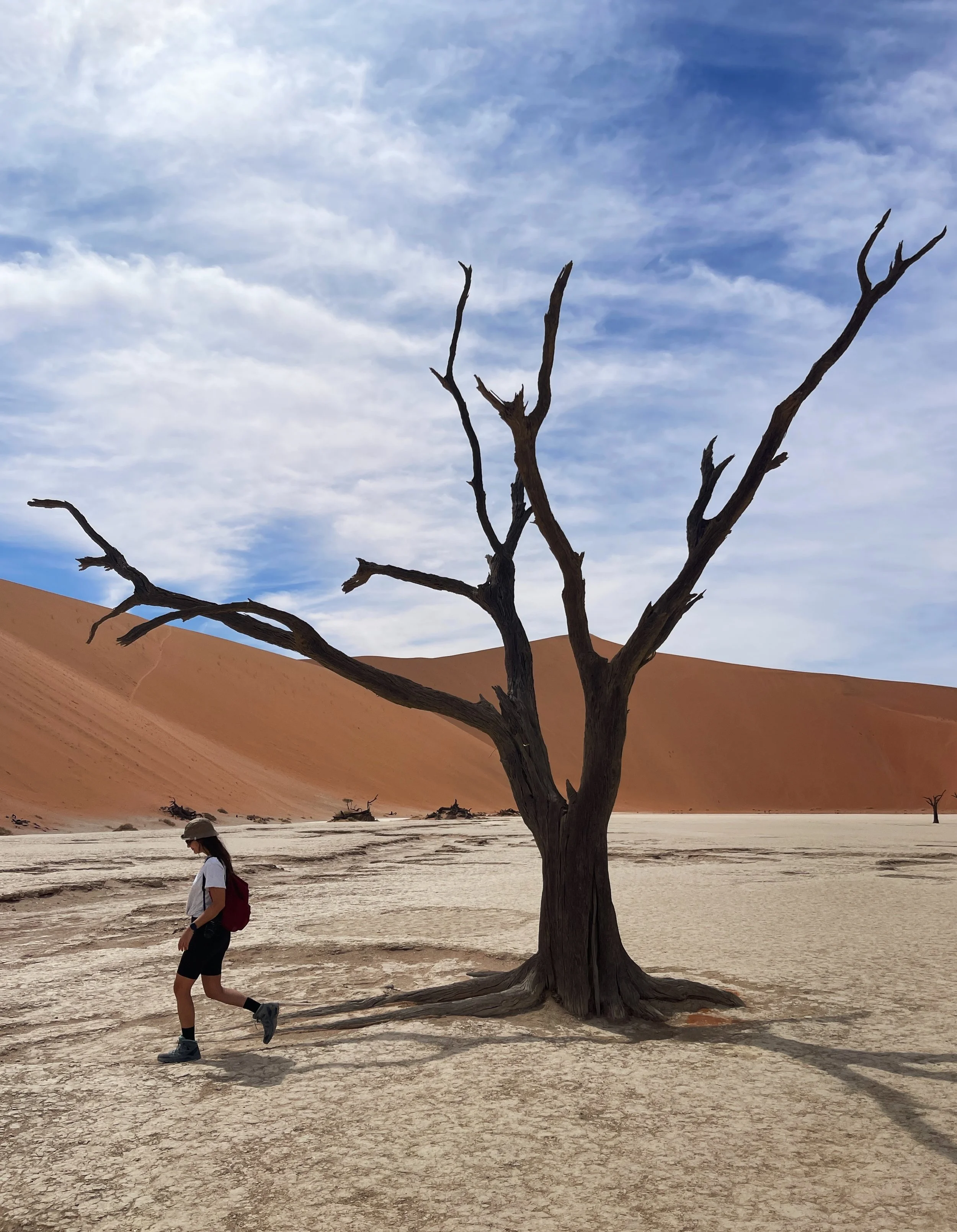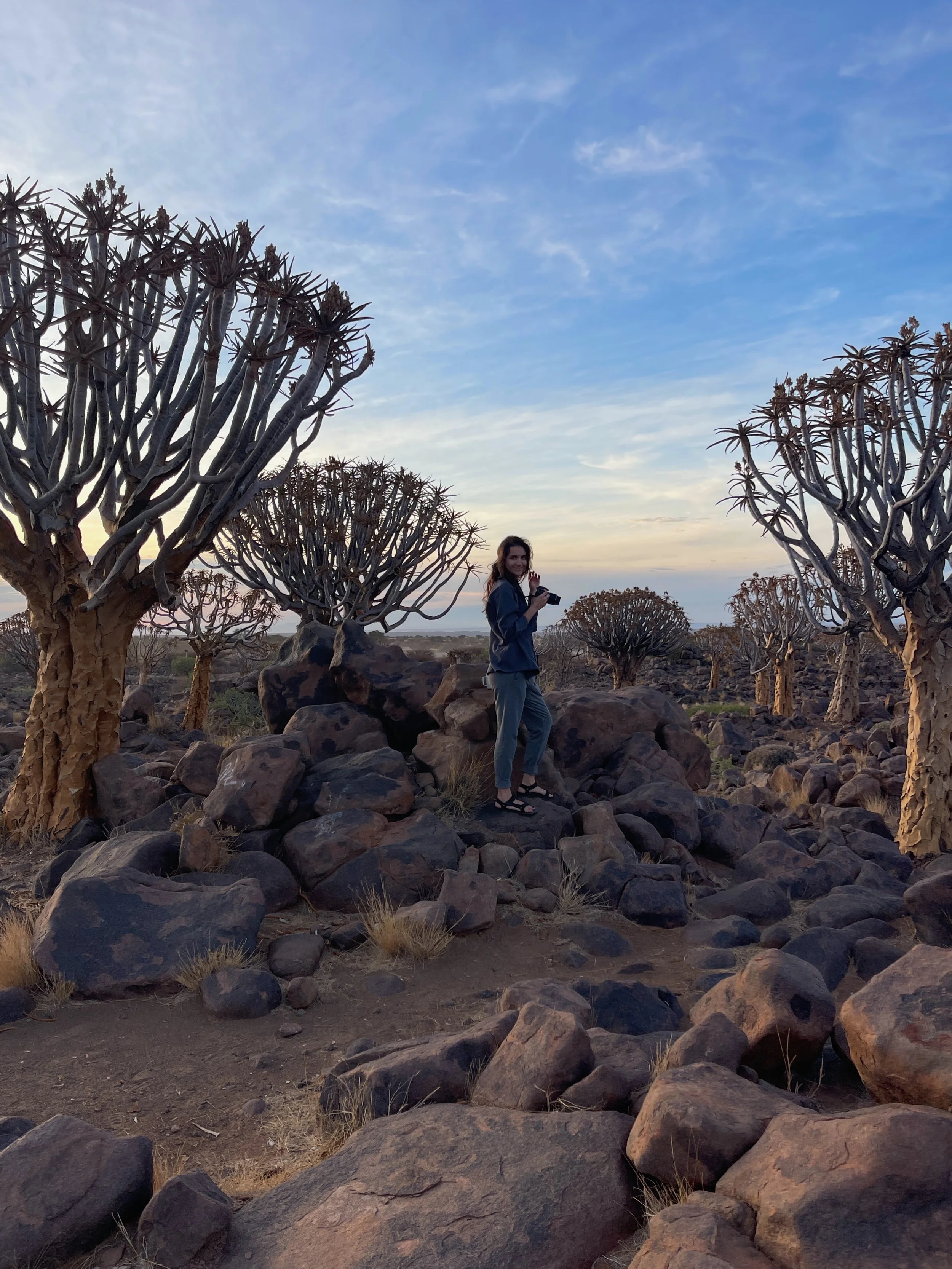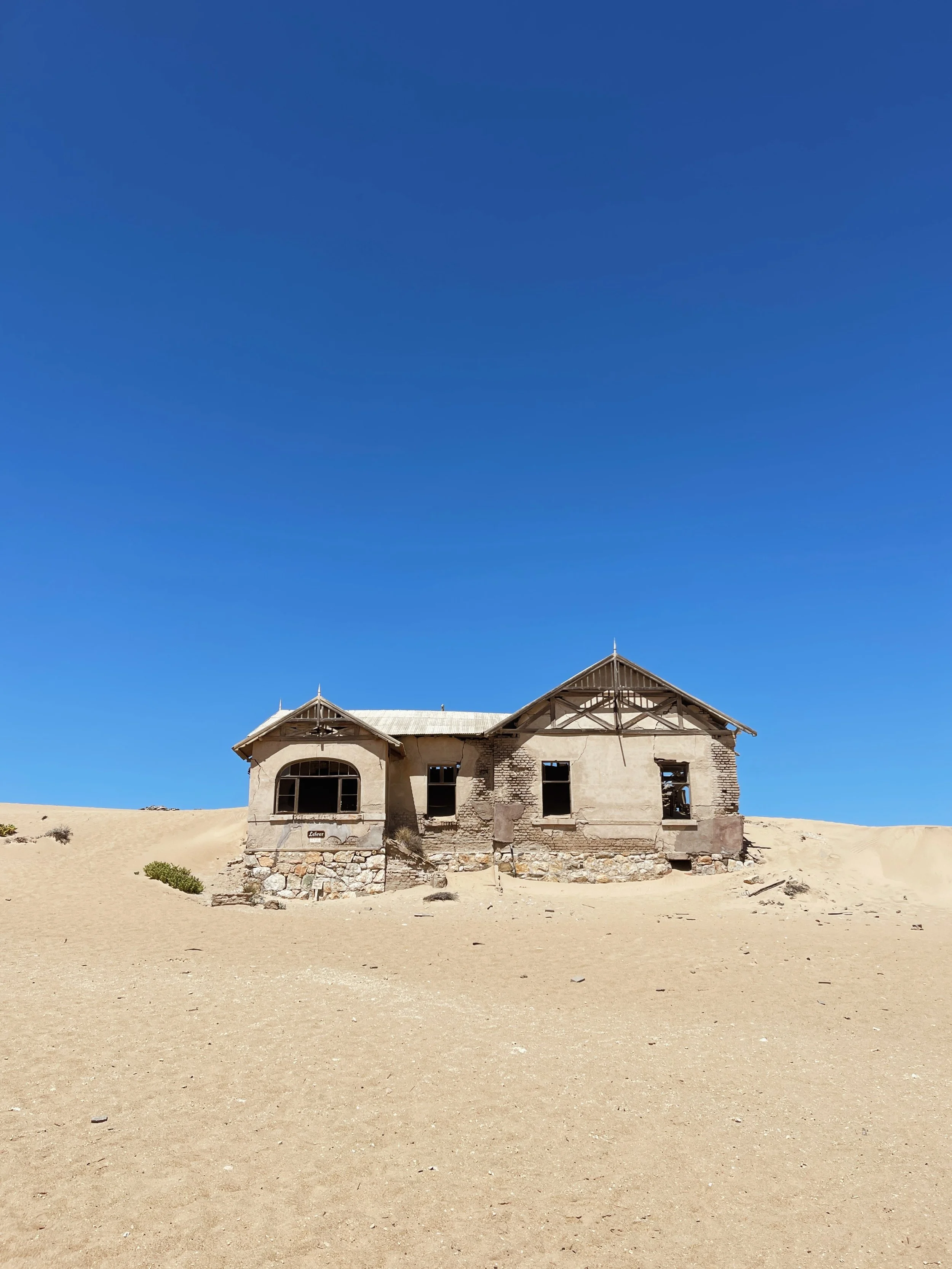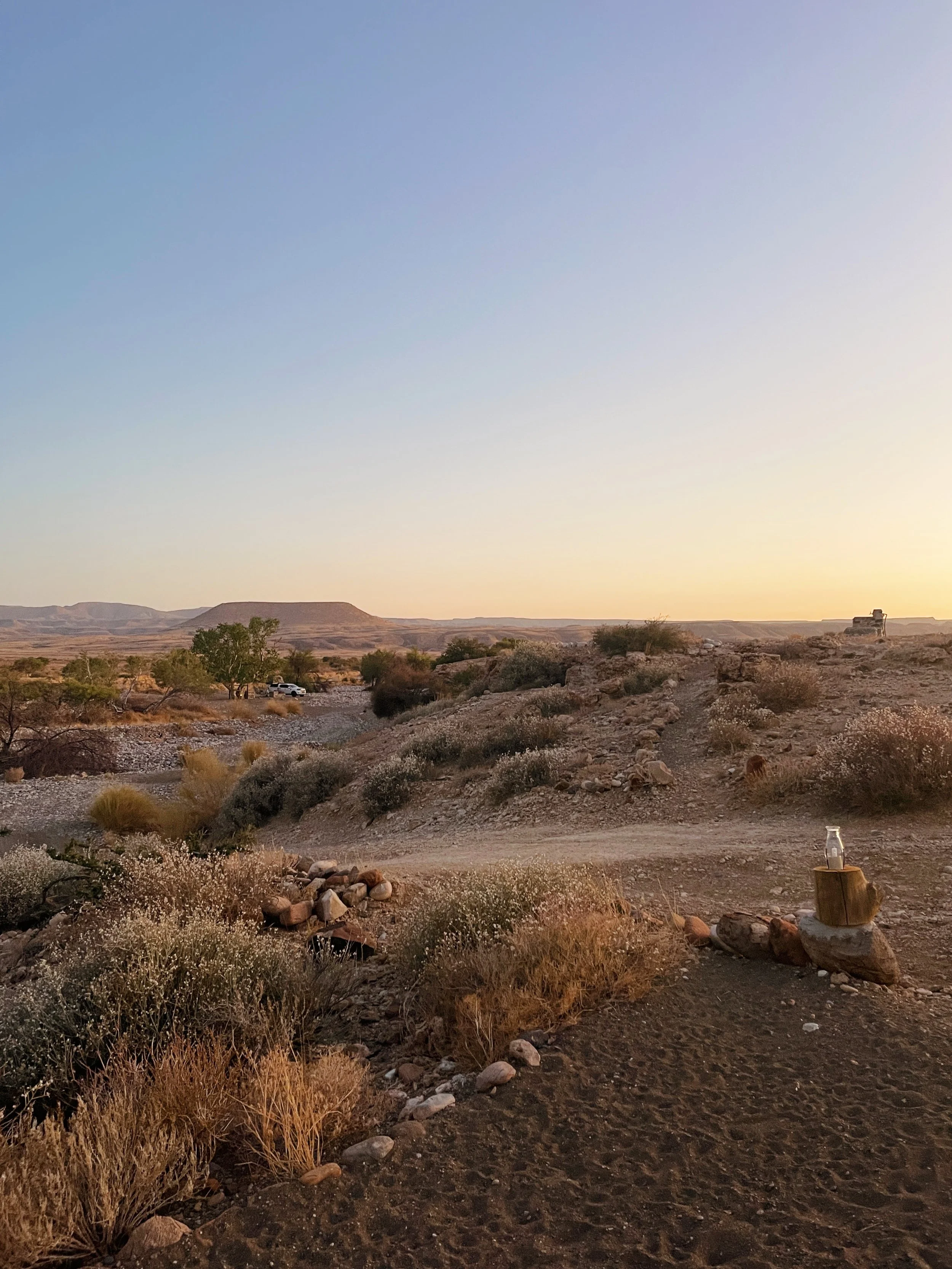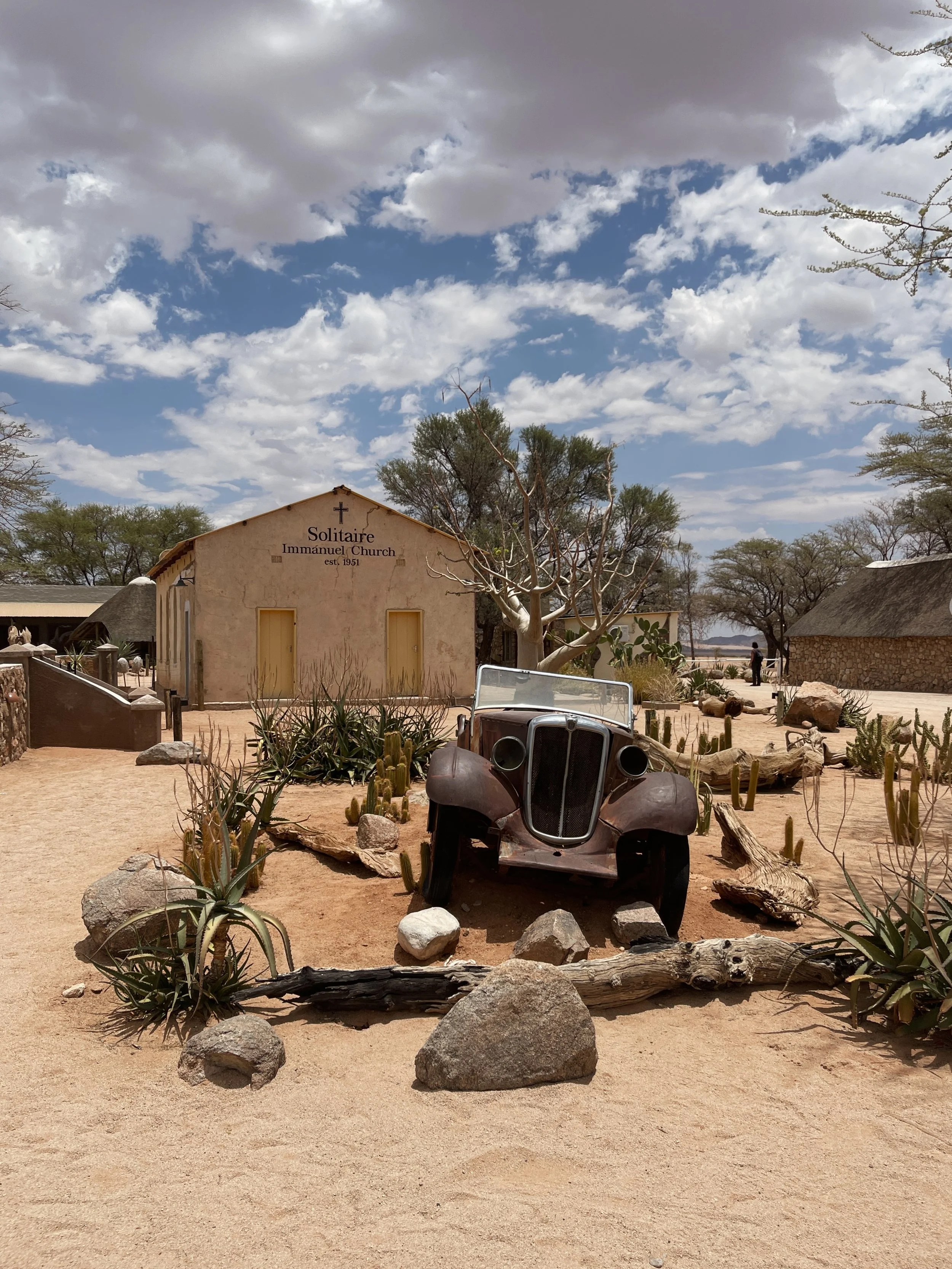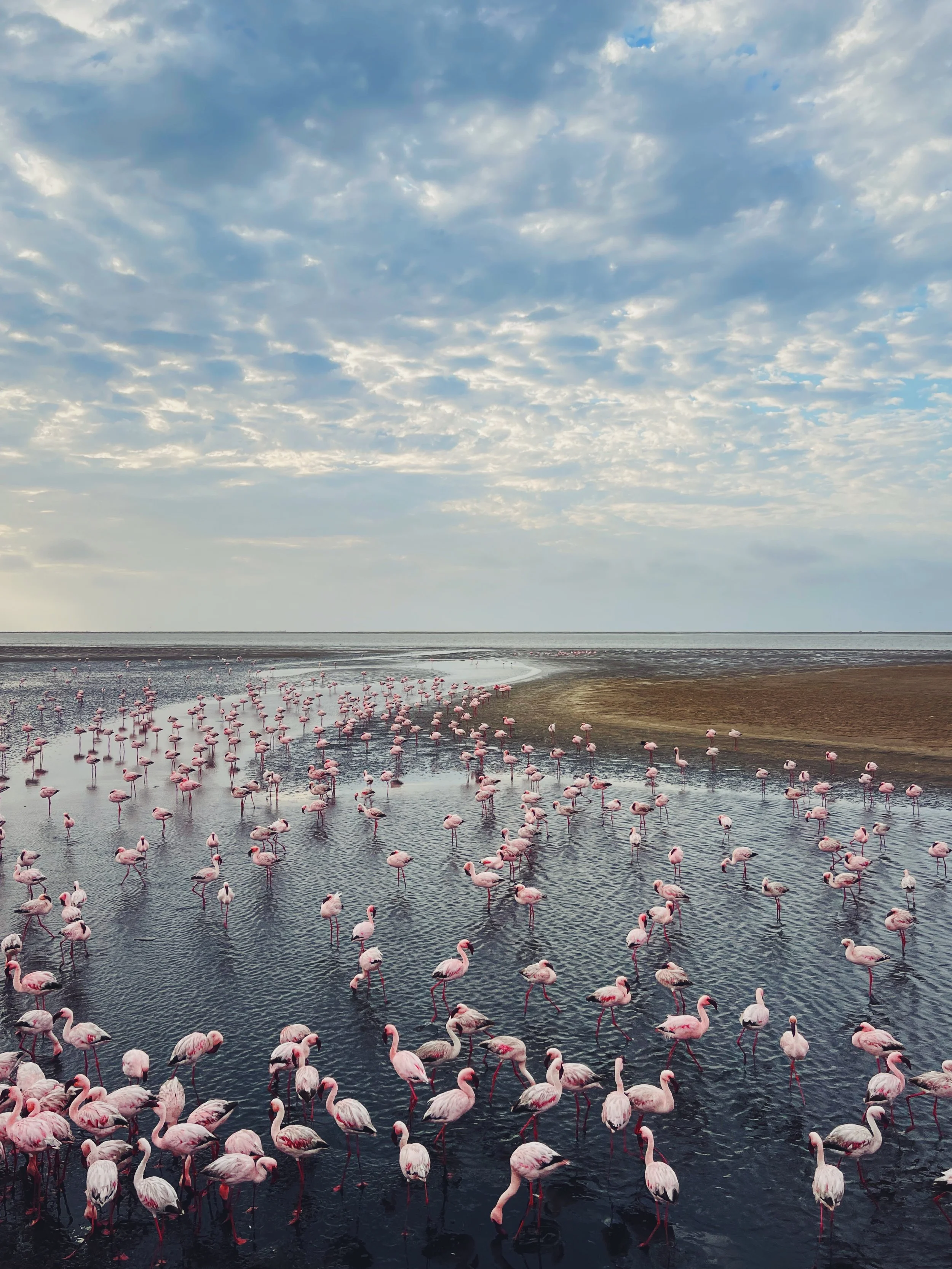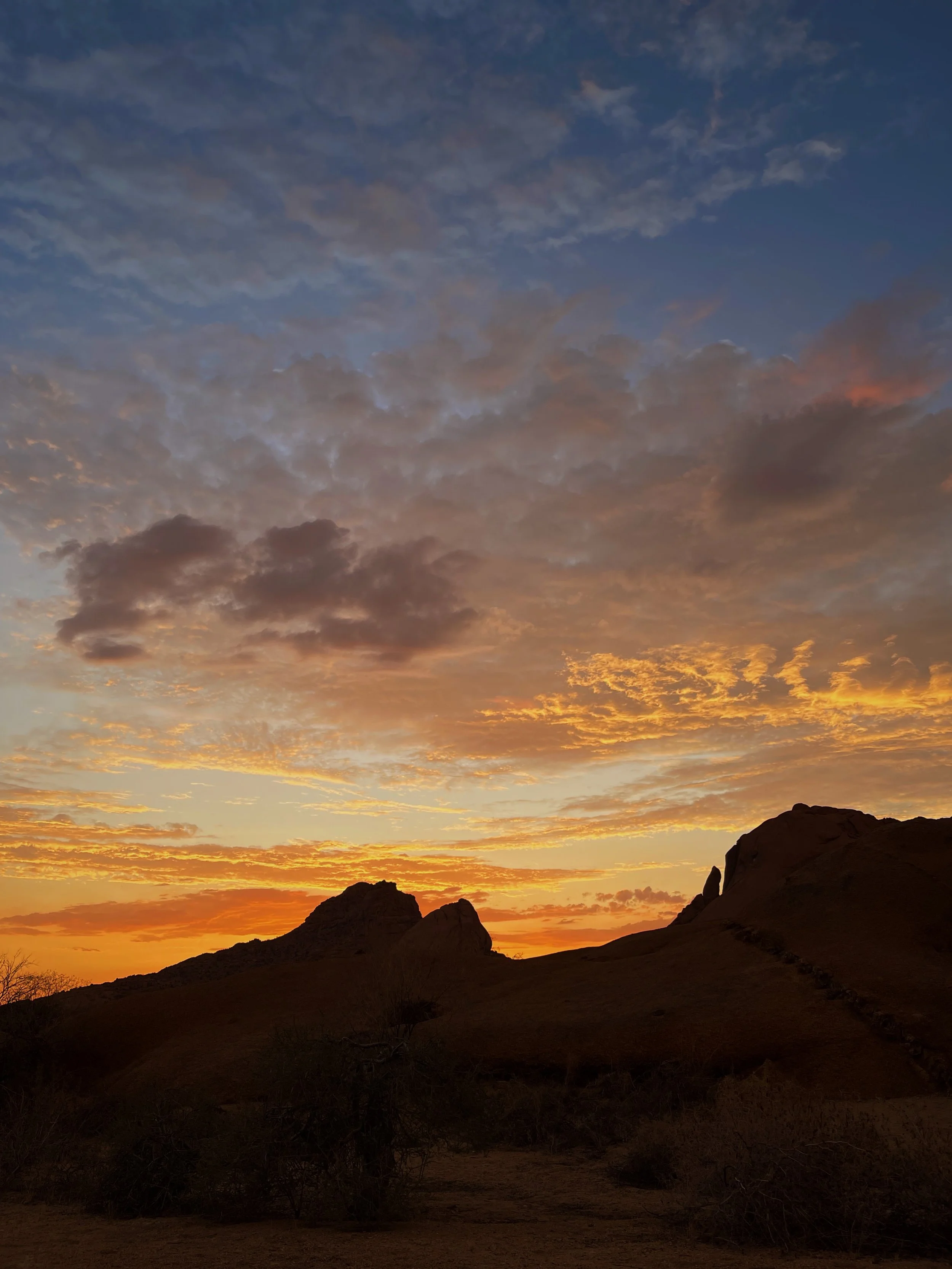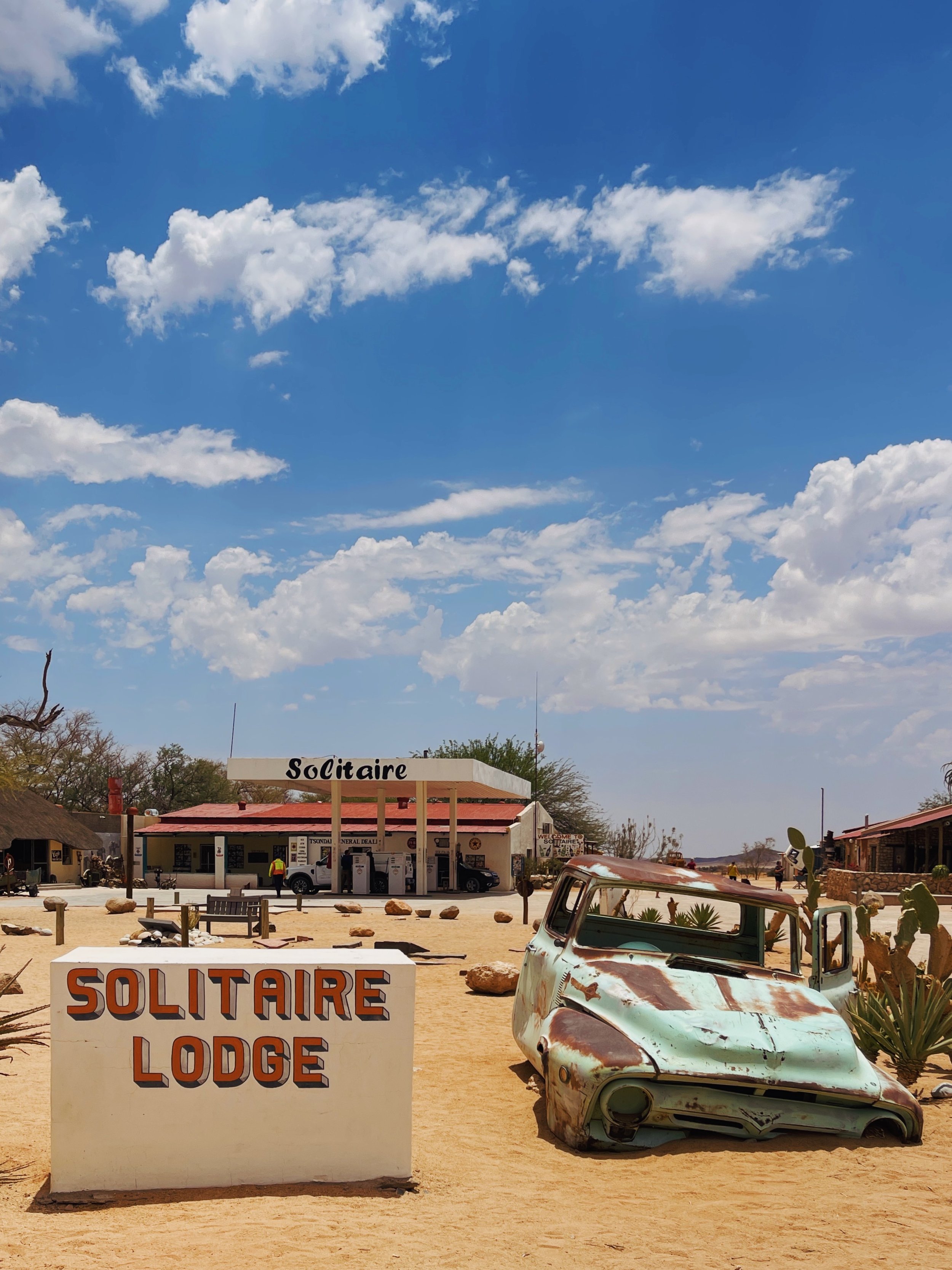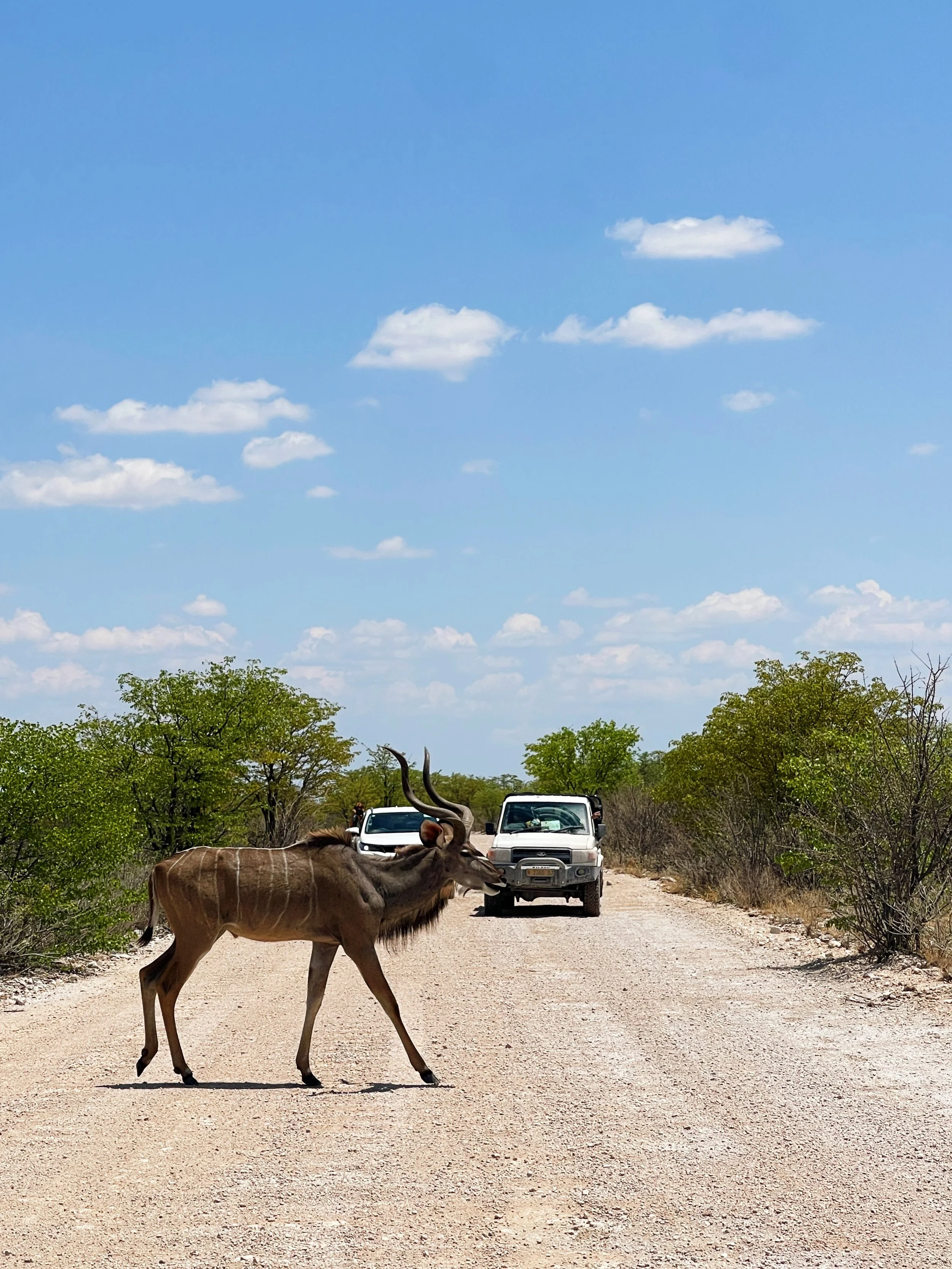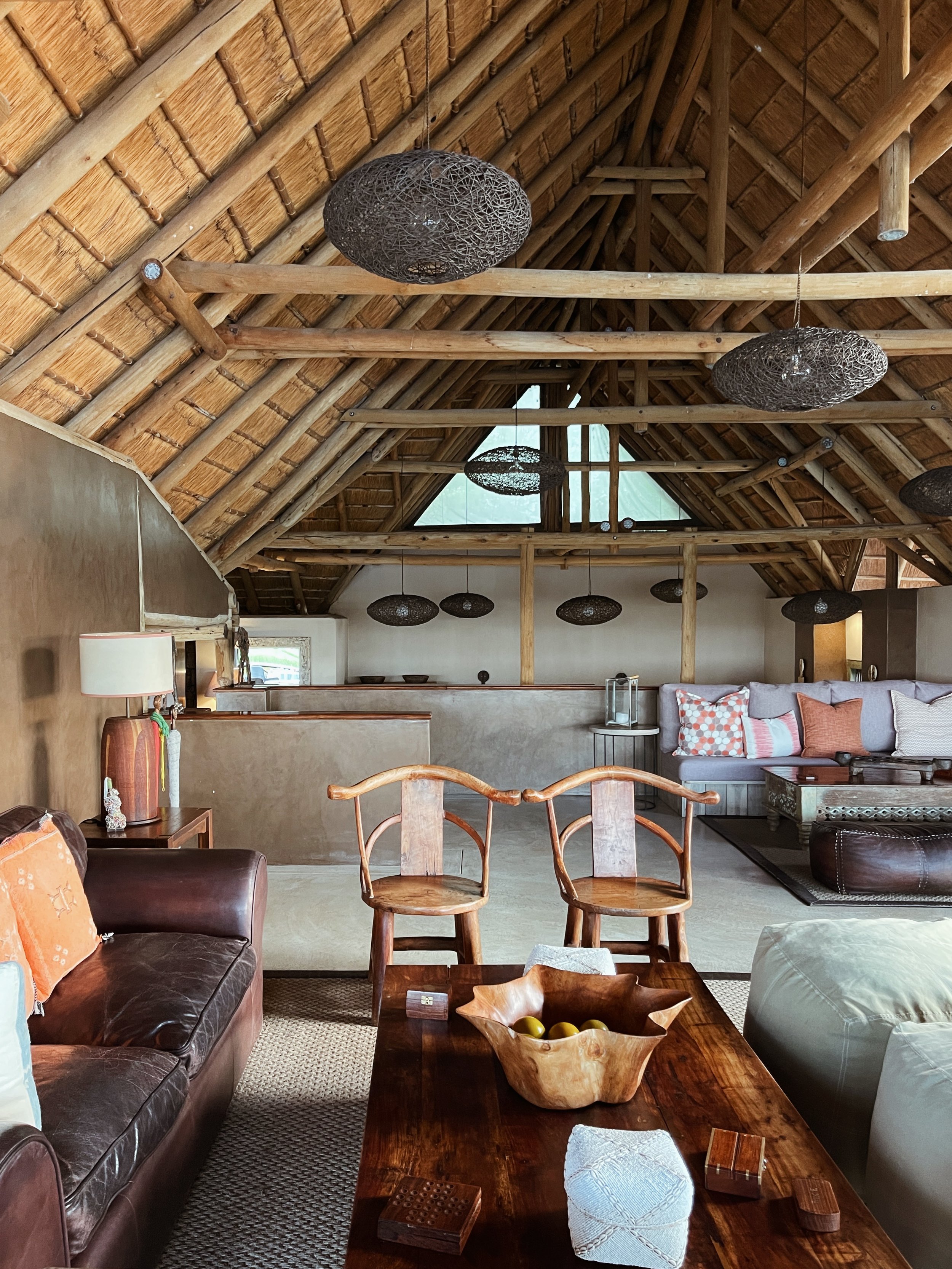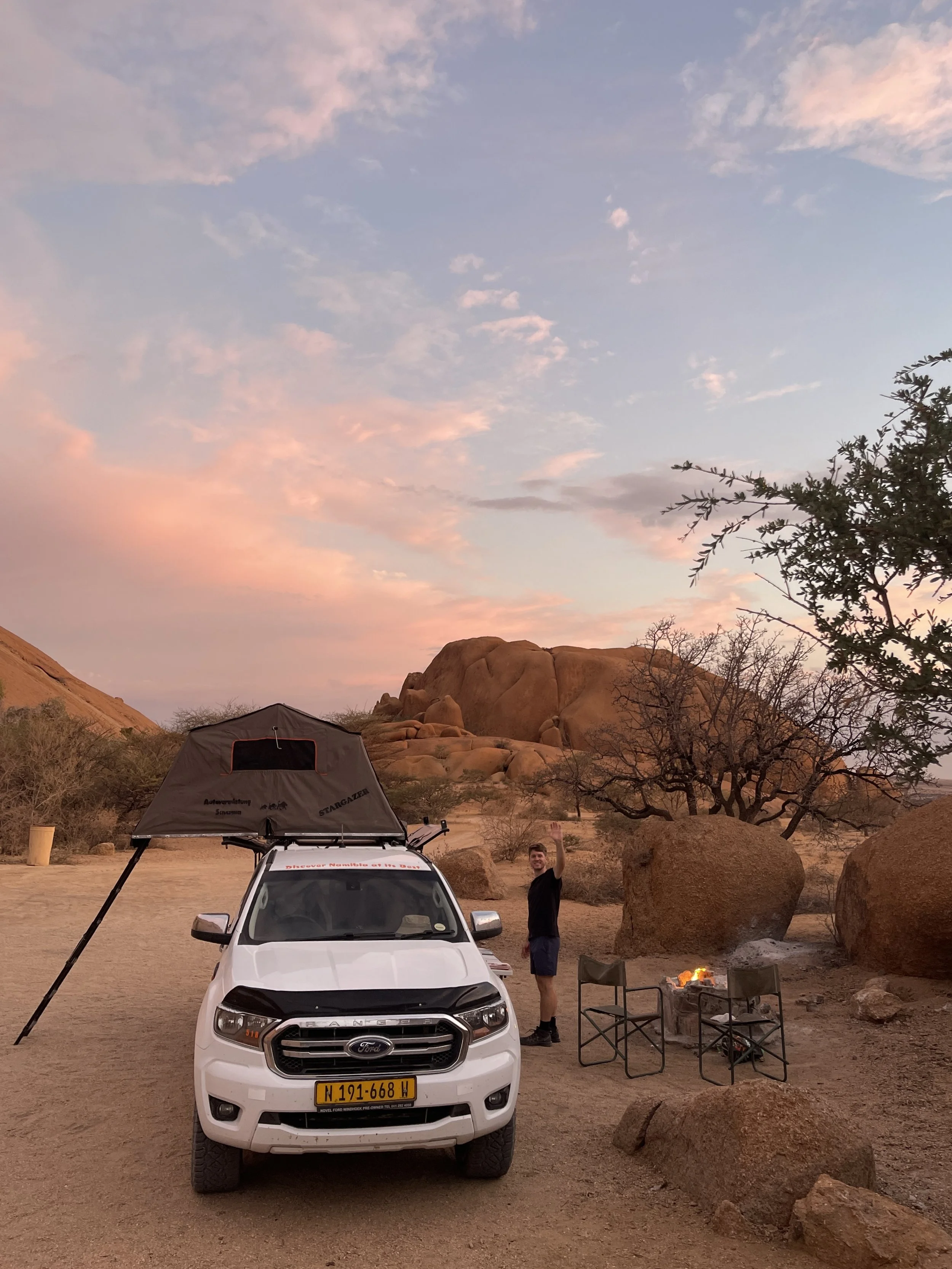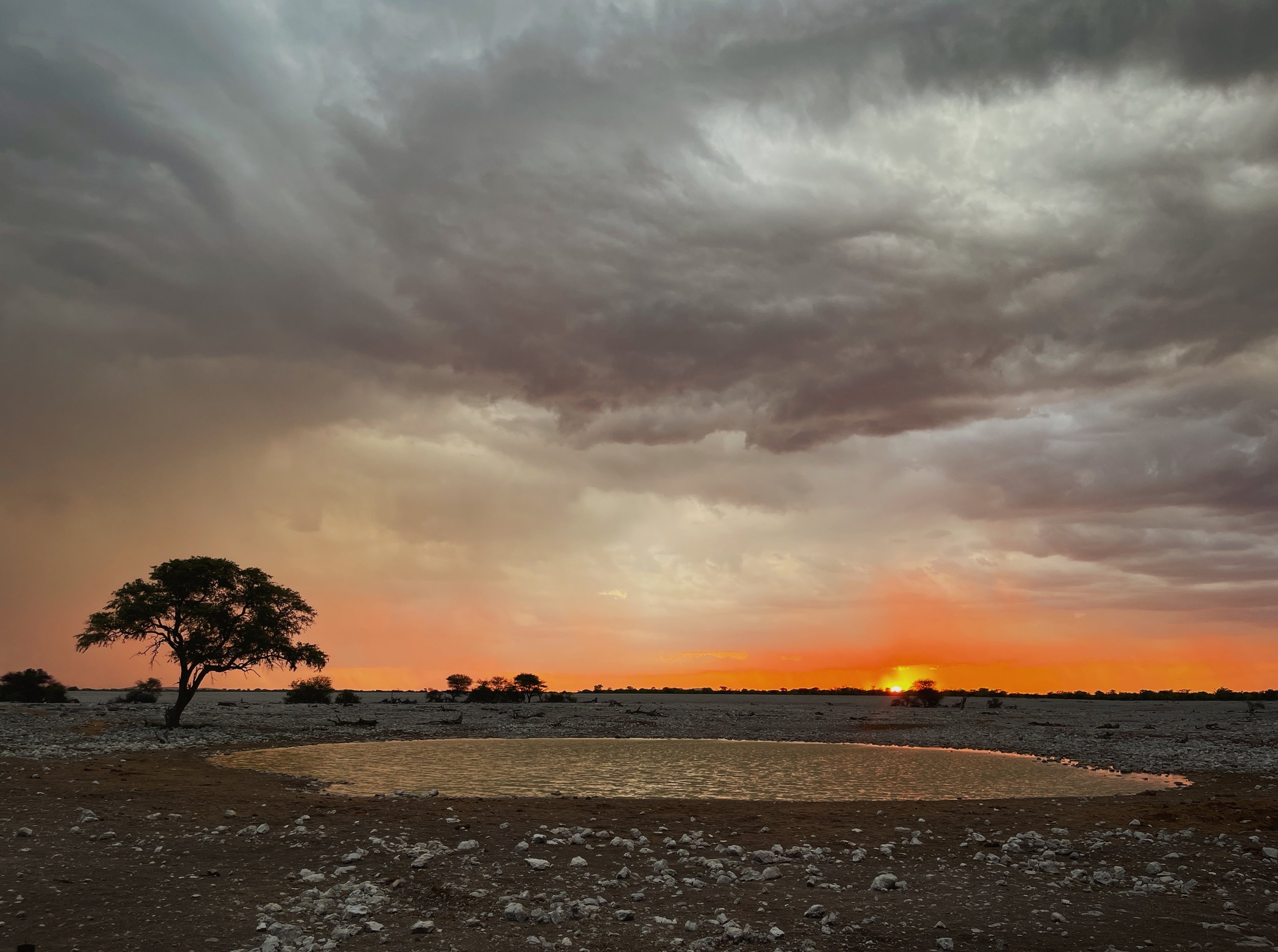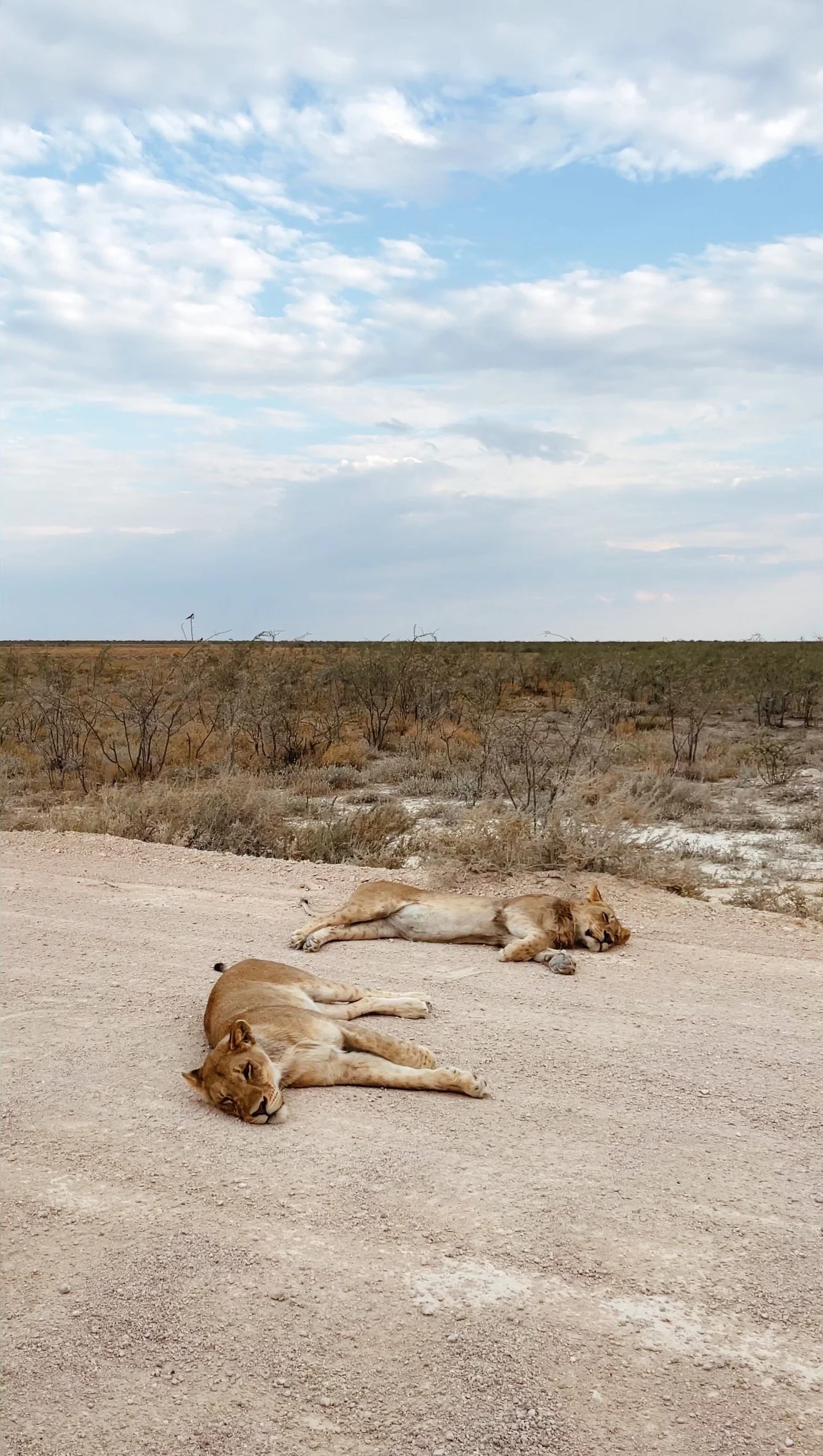Namibia
The Perfect Namibia Itinerary for 2 Weeks
Welcome to NatWasThere, where I share my favorite travel experiences. This time, we’re diving into Namibia, a land of breathtaking and unforgettable landscapes.
Namibia is a dream destination for an epic road trip. What makes it truly unforgettable is how dramatically the landscapes change, sometimes in just a two hour drive. One moment you're cruising through endless deserts, the next you're surrounded by rugged mountains or moon like terrain. It’s honestly one of the most incredible places I’ve ever visited. It felt like hopping between planets, with some areas looking straight out of Mars or the Moon.
The country is incredibly well prepared for camping, super safe, and packed with jaw dropping scenery. We drove across the country, covering long distances, and one key tip? Stick to driving during daylight hours. We avoided night driving to minimize the risk of animal crossings or car trouble in the dark.
We traveled in November, and wow, it was hot. To beat the heat, we woke up at sunrise, tackled our activities early, and hit the road during the midday heat to reach the next destination.
ITINERARY
DAY 1: Windhoek
DAY 2: Sossusvlei
DAY 5: Quiver Tree
DAY 8: Luderizt
DAY 1: Kolmanskop
DAY 1: Tsauchab River Camp
DAY: Walvis Bay
DAY: Swakopmund
Spitzkoppen
Palmwag
Skeleton Coast
Etosha
Waterberg
NAMIBIA
Sandwich Harbour
Where the ocean meets the dunes…
Windhoek — Arrival & Prepping for the Road
Our adventure began in Windhoek, Namibia’s capital. We picked up our rental car from an amazing company that gave us a full breakdown on the 4x4, tire pressure, and even desert driving tips — the car ran like a dream the entire trip. We also grabbed a local SIM card for navigation and stocked up on groceries for the next four days of remote exploration.
✨ Pro Tip: Load up on snacks, water, and fuel here — you won’t find many shops in the desert!
Sossusvlei — Dunes, Deadvlei, and Starry Skies
Our next stop was Sossusvlei, one of Namibia’s most iconic destinations. We stayed just outside the park gates at a lovely lodge — but if catching sunrise or sunset inside the park is on your bucket list, book a campsite within the park. That way, you can enter before the main gate opens.
The scenery felt like something from another planet: endless rolling sand dunes, bright red landscapes, and the stark white clay pan of Deadvlei.
☀️ Morning Adventure: We woke up before dawn to get into the park at first light. Our first stop was Dune 45, where we climbed to the top just as the sun rose — it was exhausting, but absolutely worth it. The views from the ridge were unreal.
🌵 Deadvlei: Afterward, we hiked to Deadvlei, a surreal white pan dotted with ancient, blackened trees. It felt like walking on the set of a sci-fi movie. Pictures don't do it justice — it’s an experience you have to see for yourself.
✨ Stargazing Magic: That night, back at our lodge, we were treated to the most incredible stargazing. With no light pollution for miles, the sky was packed with stars. It felt like the universe was showing off just for us.
Deadvlei
Dune 45
Joshua Tree Park — Sunrise Among Alien Trees
We drove south to Joshua Tree Park, and I have to say — seeing the Joshua trees at sunrise was something special. The way the soft light hit the twisted, spiky trees made the landscape feel almost enchanted. It’s a peaceful, otherworldly stop worth the long drive.
The Road to Luderitz — A Journey Through Color
From Joshua Tree to Lüderitz, the drive itself felt like part of the adventure. The road seemed to melt into the landscape — mountains shifting from deep reds to purples, contrasted against the pale desert sand. It’s the kind of scenery that makes you want to stop every five minutes for photos.
Oh, and get ready for gravel roads — they’re the real deal here. By this point, you’ll probably feel like a pro at navigating the bumpy, dusty tracks.
Lüderitz & Kolmanskop — Ghost Town Vibes
We spent a night in Lüderitz, a coastal town that feels like it’s stuck in time. It’s a great spot to restock your groceries, fuel up, and check out a few cozy cafés and restaurants.
The real reason to stop here, though, is Kolmanskop, the famous ghost town. Built by German settlers during the diamond rush, it was once a thriving, luxurious mining town — until the diamonds ran out. Now, it’s abandoned and slowly being reclaimed by the desert. Sand pours through windows and doorways, filling old mansions, hospitals, and ballrooms. It’s hauntingly beautiful, and the eerie, sand-filled buildings make you feel like you’re exploring a lost world.
🏚️ Creepy Cool: The hospital is especially spooky, and the contrast between the fancy European-style architecture and the encroaching dunes is surreal.
📸 Tour Tip: You can only visit Kolmanskop with a guided tour — check the schedule in advance to pick a time that works for you.
Tsauchab River Camp — Hidden Oasis
On the way to Walvis Bay, we broke up the long drive with a night at Tsauchab River Camp — a quirky, off-the-grid campsite literally in the middle of nowhere. The campsite is set in an old riverbed, with a swimming pool that was a lifesaver after hours on the road. After a long, dusty day, cooling off in the pool was pure bliss.
This spot felt like a little desert oasis — rustic, peaceful, and totally worth the stop.
I NEED TO ADD SOLITAIRE
Walvis Bay — Sand Dunes Meet the Ocean
Walvis Bay is one of the biggest cities on Namibia’s coast, known for its port, vibrant local life, and as the gateway to Sandwich Harbour — a place that completely stole my heart.
We stayed in an amazing apartment here (highly recommend!), and from the moment we arrived, the vibe felt different — a mix of industrial port town and laid-back beach escape.
🚙 Sandwich Harbour Adventure: We booked a tour with an incredible company (our guide was actually the guide trainer!). He handled the dunes like a pro, speeding over the sand mountains with ease. The views were breathtaking — the ocean crashing into towering dunes, creating an epic landscape where you feel tiny against the vastness. It’s hands-down one of the best experiences I’ve had in all my travels.
Swakopmund — Coastal Charm & Civilization
After Walvis Bay, we drove to Swakopmund — a lively coastal town that feels like a European beach retreat. It’s the perfect spot to recharge before heading into Namibia’s more rugged landscapes.
🛒 Stock Up: This is your last chance for big grocery stores and supplies. We hit SPAR and a fantastic local butcher to load up on everything we’d need for the next half of the trip.
☕ Cafés & Restaurants: Swakopmund is packed with great spots for brunch, coffee, and dinner. A few favorites: Village Café (quirky and colorful), Slowtown Coffee Roasters (great brew), and The Tug (seafood with ocean views).
Spitzkoppe — Namibia's 'Matterhorn' of the Desert
Spitzkoppe is a stunning, granite mountain range often called the 'Matterhorn of Namibia' because of its dramatic, jagged peaks rising from the flat desert floor. The mountains are believed to be over 120 million years old, and they hold deep cultural significance for the San people (Bushmen), who left behind ancient rock art scattered around the area.
The campsite here is truly special. It’s so vast and spread out that if you visit outside peak season, you might feel like you have the whole place to yourself. We parked near some beautiful rock formations that were perfect for climbing — watching the sunset from up there was unreal. The sky lit up in shades of orange and purple, blending with the rugged mountain skyline.
⛺ Camping Tip: Facilities are basic — just WCs and communal showers — but the raw beauty of the location more than makes up for it.
🌄 Rock Art & Culture: We spent a morning with a local guide who showed us ancient rock paintings depicting animals and hunting scenes. He explained the traditions of the San people and how they lived harmoniously with the land. It was fascinating to hear stories passed down through generations, standing right where they once gathered.
🧗 Hiking & Climbing: If you want to hike to the peaks, you’ll need a guide for safety. There’s a gate separating the camping area from the hiking trails, so arrange a guide in advance if you’re keen to explore the higher parts of the mountains.
After a sunset BBQ (thanks to the meat we stocked up on in Swakopmund!), we fell asleep under a sky packed with stars — truly one of the most peaceful nights of the trip.
We needed to head north and stopped for a night at Madisa Camp — kind of perfect to split our journey to Skeleton Coast.
Skeleton Coast
is a park from another planet. It’s like being on the moon; the sand has this grey color, and just the drive is an adventure itself. You can spend the night there, with options ranging from a campsite to the super-luxury Shipwreck Lodge. The vibe is surreal, like you’re truly on another planet. During our drive, we barely saw anyone. We decided not to stay overnight and continued toward Etosha, but we stopped at Palmwag Campsite (Gondwana Collection). Honestly, these guys know how to do campsites. We didn’t know much about them beforehand, but it turned out to be the best campsite we visited. They offer luxury cabins, but even the standard campsites come with small private structures, including bathrooms and a canopy. Everything was super clean, and the views of the valley were amazing. Plus, you get access to the lodge’s pools, restaurants, and bars — a great experience overall.
Next up was one of our final stops:
Etosha.
We stayed at the Okaukuejo area campsite, located on the western side of the park. The park’s waterhole is incredible — animals come mostly at sunrise and sunset to drink, and it feels like you’re sitting in an open-air cinema waiting for wildlife to show up. A tip from our trip: during the dry season, these waterholes become essential for animals, so you’ll likely see more wildlife than in the rainy season when animals can drink from natural puddles.
The campsite itself? Honestly, a bit rough. The location is fantastic, but the amenities weren’t great. The shared bathrooms could’ve been cleaner. If you prefer, there are private chalets available. We stuck with our rooftop tent setup to make the most of it. Etosha itself is breathtaking. We spent countless hours driving around — it was my first time doing a self-drive safari without a guide, and it was incredibly rewarding to spot animals on our own. We got super lucky one evening and found a lion family chilling on the road as we headed back to camp before sunset.
We stayed two nights in Etosha before moving to
Onguma Private Game Reserve,
hoping to catch some of the animals we missed. Unfortunately, luck wasn’t on our side. We did a private sunrise tour, but wildlife was scarce. Onguma has several accommodation options. We stayed at Leadwood Campsite, which offers great amenities like a pool, hammocks, and a restaurant. However, the campsite itself needs some improvement — it was swarming with insects. We camped throughout the trip without issues, but the sheer number of bugs here was overwhelming. I think it’s because the site is surrounded by dense vegetation and trees.
After our safari adventures, we began our journey back to Windhoek, stopping at Waterberg along the way to break up the drive. Waterberg is a mountain area where we did a lovely hike. There are also excursions offering a Rhino experience in the Waterberg Wilderness private nature reserve. Since we had already seen rhinos, we skipped that one and enjoyed exploring the area on foot. It was peaceful, and we barely saw anyone. The campsite here was decent.
Back in Windhoek, we stayed at a hotel (find it) — safe, comfortable, and with European-style amenities. Breakfast was excellent. If you’re a meat lover, I recommend trying these places (find them). There’s also a great local handicraft market worth visiting, plus a couple of good coffee spots (find them).
And suddenly, our two weeks were over. 😢
be careful with the gas, they try to steal you
book the famous places, the rest i recomment to go with the flow because namibia will steal your hearth and if you have time you may want to enjoy some places more. i did not have any problem with the spots and i did not have all of them booked.
meat and vegies for BBQ, all of them have pits to grill
a lot of lodge they have the campsite area and the fancy lodge, but you ususally can use all the amenities as pools and restaurants
Joshua Tree Park
Kolmanskop
Tsauchab River Camp
Walvis Bay
Sandwich Harbour
Spitzkoppe
Bogotá
And of course, don’t miss my Namibia Google Map!
The ultimate companion with all my favorite places pinned for you! :)
